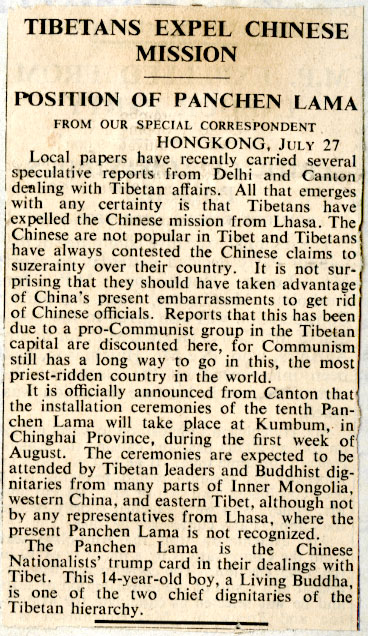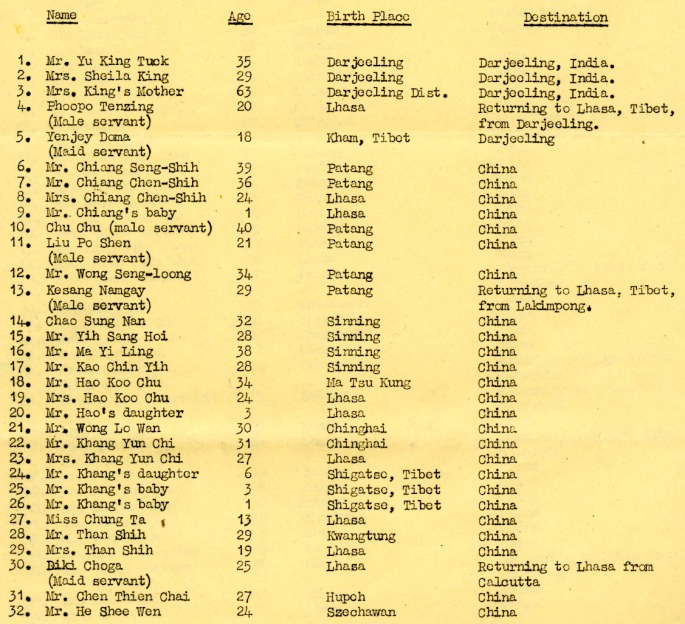
I first heard of Captain Hamilton Bower as the man who made the first major manuscript find in the Central Asian deserts: the “Bower Manuscript” which sparked off the whole international scramble for archaeological treasures by Britain, France, Russia and others. At the time that he obtained this manuscript, in 1889, Bower had been sent on the trail of an Afghan who had murdered a Scottish explorer. A couple of years later, in 1891, Bower was sent on another mission, this time to Tibet as a spy. In disguise, with another British officer and an Indian “pundit”, Bower crossed into Western Tibet and proceeded towards Lhasa. But before he reached the city he was discovered by Tibetan officials, who flatly denied permission to enter Lhasa. In the end, he had to continue eastwards, crossing into Kham and leaving Tibet via Tachienlu.
Bower published the diaries of his travels in a book, Diary of a Journey Across Tibet, which was quite popular at the time. He also wrote a report entitled Some Notes on Tibetan Affairs, which was not published. This ten-page pamphlet was intended for the eyes of the Director of Military Intelligence, and was highly confidential. The note from British Intelligence at Shimla mentions that an account of “Captain Bower’s adventurous journey” is publicly available, but “the present pamphlet contains his remarks on the government, commerce, etc, of Tibet and China, which it is politically undesirable to publish and it is therefore issued confidentially.”
Reading the pamphlet, it’s easy to see why it was keep secret. Bower makes no attempt to hide the fact that he is concerned mainly with the prospects of British trade with Tibet (mainly the tea trade) and the means of opening up this trade via a military expedition. This was very much in line with the agenda of the British government in India was thinking, which was aggressively pushed forward by Lord Curzon once he took up the position of Viceroy. The invasion of Tibetan under Younghusband happened just over ten years after the publication of Bower’s report.
* * *
Below are some extracts from the report, and under these, a link to a PDF of the whole thing.
On the premature deaths of the Dalai Lamas
Unfortunately Talai Lamas, who are supposed to come of age at eighteen, almost invariably die before attaining their majority. Since the beginning of the present century, all of them, disgusted with the sins of the world, have retired to the mansion of joy before the time came for taking over the seals of office. I am afraid that a post-mortem would demonstrate that the retirement, though undoubtedly owing to the sins of the world, was not entirely voluntary. The prevalence of poisoning in Tibet, a fact of which there is no doubt whatever, added to the abnormally high rate of mortality obtaining amongst them, is pretty conclusive evidence against the Gyalpos (literally “kings”) or regents with whom the power remains.
On China’s lack of influence in Tibet
The position of the Amban at Lhassa I take to be exactly the same as that of his fellow-countryman in Chiamdo; treated outwardly with much respect, before strangers at least, the bearing of the Tibetan authorities towards him is almost servile, but in reality he has no power whatever and lives in continual dread of the powerful priesthood. Even in Chinese Tibet, a country in no way to be confused with Independent Tibet, the Chinese power is merely nominal. In Lithang, for instance, the mandarin was quite pathetic in his complaints of his position: how he had no power whatever and dare not do anything for fear of the monks, how they were a turbulent lot, and a deal more to that effect.
Prospects for a British invasion
Looking at Tibet from a military point of view, we may say that it is quite feasible to coerce the Lhassa Government either from the south or west as with the exception of the passes the general elevation is not very great… As a general rule, it may be said that they can all be crossed at any time from midsummer to Christmas. The south and south-west also being populated, supplies sufficient for a very small force could be procured in the country, and a very small force is all that would be required to coerce the Lhassa Government.
The quality of Tibetan tea
From Lhassa to Ta Chen Lu the string of animals carrying brick tea to meet this enormous demand is continuous. These bricks are made of what appears to be the prunings of neglected bushes of extreme age. I used to think that some of the tea imported into Chinese Turkistan was the worst in the world, but since visiting Tibet I have changed my opinion.
Opening Tibet to trade
But tea is the article on which we must primarily pin our faith as a means of opening Tibet to commerce. The trade in other articles imported from China is simply an adjunct to the great tea trade; as soon as that is diverted to Darjeeling the other will assuredly follow. Unfortunately great opposition would be brought to bear from the Chinese, who, I believe, would almost as soon give up all their shadowy claim to Tibet as their monopoly of the supply of tea…
British relations with China
A general wish to keep on good terms with China in the hopes that she may be of possible use as an ally at some future date has largely influenced our dealings with her of late years; nothing could be more misplaced than the nervous consideration for China’s feelings that has guided our policy.
* * *
Bower’s report was not taken very seriously back in England. Peter Hopkirk, who consulted a copy of the report in the archives of the Foreign Office, writes:
That the Foreign Office liked neither the hawkish tone of Bower’s report not its message is apparent from two footnotes neatly inscribed on the letter accompanying it. One dismisses his views on the Chinese in Tibet as ‘somewhat crude’. The other, in red ink, observes that he appeared to be ‘a sort of damn them all’ man.
You can probably judge for yourself from the extracts above, but these comments seem pretty fair to me. They also reflect the general gap between the attitudes of the British in India and at home; when Curzon did push through the invasion of Tibet in 1903 it was in the face of strong opposition from the British government.
* * *
Click here for a PDF scan of Bower’s “Some Notes on Tibetan Affairs”
* * *
References
Bower, H. 1893. “Some Notes on Tibetan Affairs”. Calcutta: Office of the Superintendent of Government Printing.
Bower, H. 1894. Diary of a Journey Across Tibet. London: Rivington, Percival and Co.
See also Peter Hopkirk’s Tresspassers on the Roof of the World: The Race for Lhasa (Oxford University Press, 1982) for a discussion of Bower’s journey and this report (pp.83-91).






